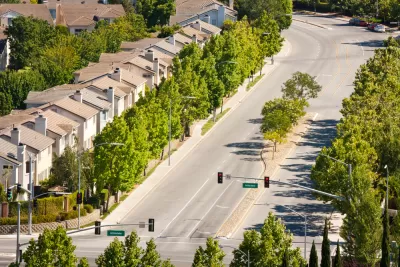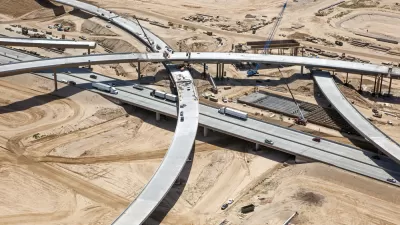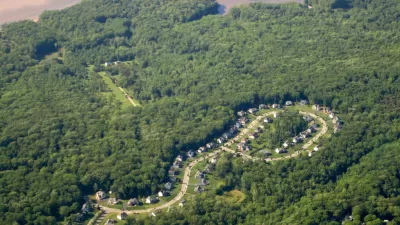A study published in the Proceedings of the National Academy of Sciences finds evidence of the decline of sprawl as the dominant form of construction in the United States and attracted lots of media attention in the process.

The study, "A century of sprawl in the United States," by Christopher Barrington-Leigh and Adam Millard, constructed a "long-run, high-resolution time series" of street-network sprawl in the United States to find that despite the lack of a coordinated policy effort, communities around the United States have moved beyond peak sprawl.
A trio of news outlets picked up the news yesterday, which indicates the interest captured by the idea of sprawl and its command over the American built environment.
Nathan Collins covered the story for Pacific Standard, focusing on the study's use of a term called "node degree" to measure sprawl. "To measure street connectivity, the pair used the concept of node degree, a term borrowed from network science that quantifies the number of paths in and and [sic] out of a point—in this case, the number of streets going in and out of an intersection. A four-way intersection has degree four, for example, while a T-intersection has degree three." According to the study's analysis, American streets began a decline in node degree from an average figure of 3.2 during the 1920s. The nadir came in the mid-1990s when the country's average node degree hit 2.6. A reversal in America's sprawl habit followed, pushing node degree back to 2.89 by 2012.
Coverage by Seth Borenstein for Phys.org focused on some of the areas controlling for sprawl, according to the study: "The five counties that Barrington-Leigh found to be controlling sprawl the most since the mid-1990s are Travis County, Texas; Mecklenburg County, North Carolina; Alachua County, Florida; Iredell County, North Carolina; and Franklin County, Ohio. He found the Austin region's new construction has cut sprawl by nearly one-quarter in that time." Borenstein also found a researcher at the University of Utah who questions the use of street connectivity as a measure of sprawl.
Finally, an article by Eric Jaffe for CityLab focuses on how the study changes the traditional timeline of the dominance of sprawl. According to Jaffe's interpretation, Barrington-Leigh and Millard-Ball show that "sprawl started to rise in the mid-1920s—indicated by a drop in average street node scores. The trend suggests that developers started to copy the early cul-de-sac planning that occurred in the likes of Radburn, New Jersey, in 1928. When the interstate system emerged, says Millard-Ball, it perpetuated a disconnect street trajectory many metro areas were already following."
FULL STORY: A century of sprawl in the United States

Planetizen Federal Action Tracker
A weekly monitor of how Trump’s orders and actions are impacting planners and planning in America.

Maui's Vacation Rental Debate Turns Ugly
Verbal attacks, misinformation campaigns and fistfights plague a high-stakes debate to convert thousands of vacation rentals into long-term housing.

Restaurant Patios Were a Pandemic Win — Why Were They so Hard to Keep?
Social distancing requirements and changes in travel patterns prompted cities to pilot new uses for street and sidewalk space. Then it got complicated.

Charlottesville Temporarily Has No Zoning Code
A judge ordered the Virginia city to throw out its newly revised zoning code, leaving permitting for new development in legal limbo.

In California Battle of Housing vs. Environment, Housing Just Won
A new state law significantly limits the power of CEQA, an environmental review law that served as a powerful tool for blocking new development.

Boulder Eliminates Parking Minimums Citywide
Officials estimate the cost of building a single underground parking space at up to $100,000.
Urban Design for Planners 1: Software Tools
This six-course series explores essential urban design concepts using open source software and equips planners with the tools they need to participate fully in the urban design process.
Planning for Universal Design
Learn the tools for implementing Universal Design in planning regulations.
Heyer Gruel & Associates PA
JM Goldson LLC
Custer County Colorado
City of Camden Redevelopment Agency
City of Astoria
Transportation Research & Education Center (TREC) at Portland State University
Jefferson Parish Government
Camden Redevelopment Agency
City of Claremont





























